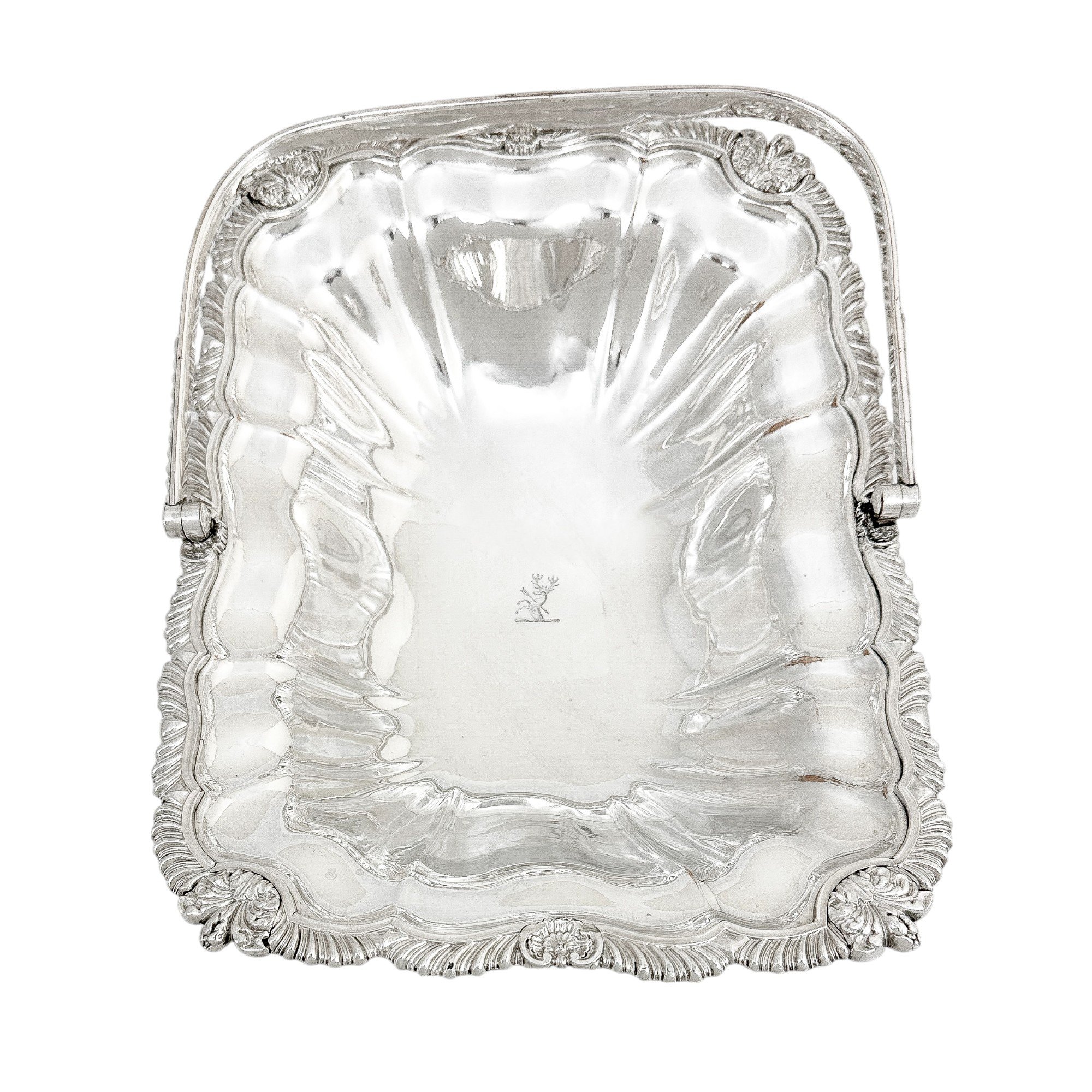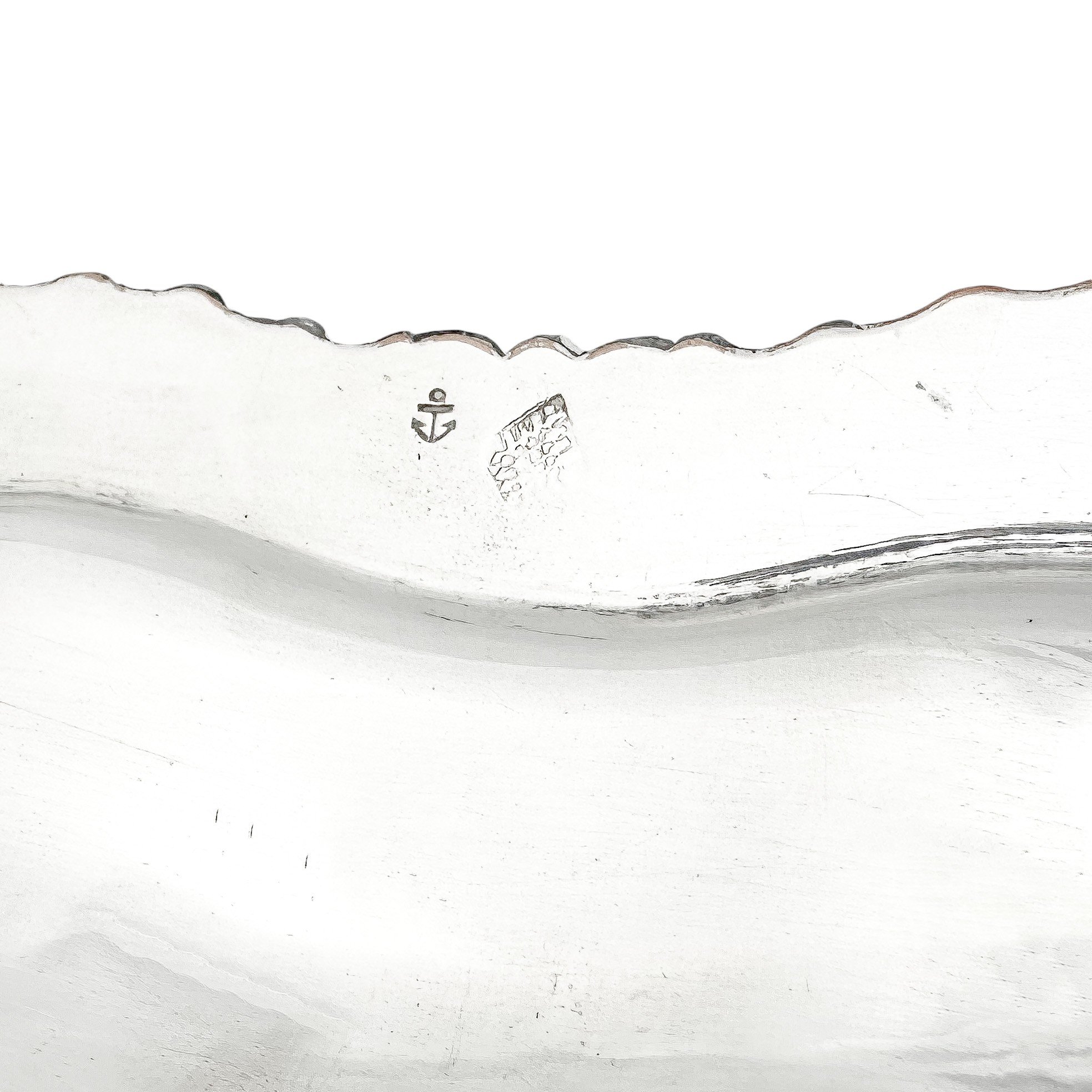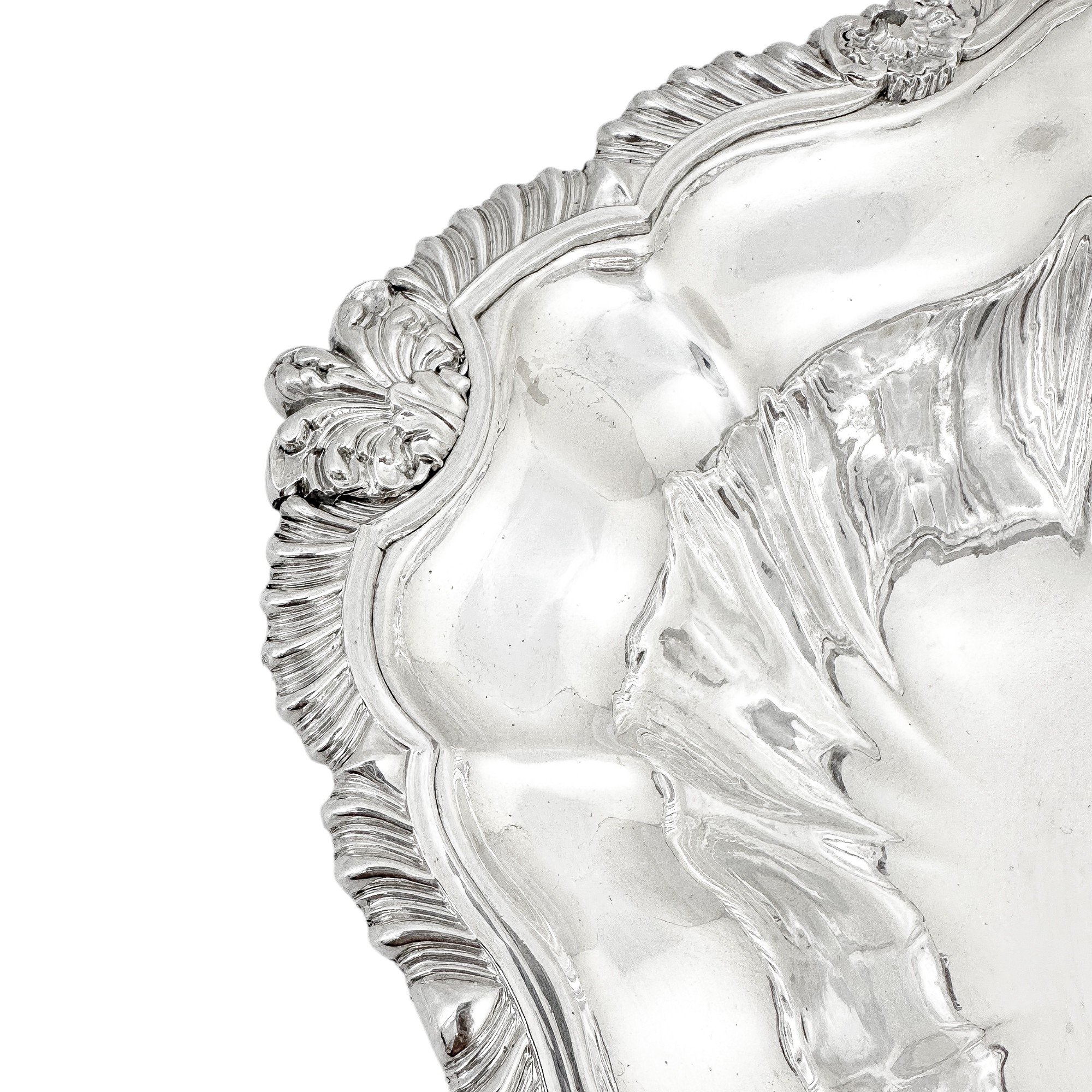 Image 1 of 8
Image 1 of 8

 Image 2 of 8
Image 2 of 8

 Image 3 of 8
Image 3 of 8

 Image 4 of 8
Image 4 of 8

 Image 5 of 8
Image 5 of 8

 Image 6 of 8
Image 6 of 8

 Image 7 of 8
Image 7 of 8

 Image 8 of 8
Image 8 of 8









George III Old Sheffield plate large coffee pot, pear body, embossed scrolls and flowers
Exceptional George III Old Sheffield silver plate coffee pot with domed hinged lid over a pear shaped baluster body that is resting on a circular domed spreading foot. Splendid Rococo repoussage of flowers, scrolls and foliage. The swan neck spout is decorated with applied chased leaf design; the cover is embossed with a band of flowers and scrolls. The S-scroll handle has an applied floral thumb-piece and the lid finial is trimmed with a gadrooned border.
The coffeepot has two asymmetric cartouches that are enclosed in floral rocaille borders; both are vacant for personalised engraving.
Made in Sheffield, c 1770’s.
814 g
26 cm tall
22 cm from spout to handle
12 cm across the widest point
Great antique condition. Some copper bleeding commensurate with age; small ding to top of handle; soldering to top of handle.
Exceptional George III Old Sheffield silver plate coffee pot with domed hinged lid over a pear shaped baluster body that is resting on a circular domed spreading foot. Splendid Rococo repoussage of flowers, scrolls and foliage. The swan neck spout is decorated with applied chased leaf design; the cover is embossed with a band of flowers and scrolls. The S-scroll handle has an applied floral thumb-piece and the lid finial is trimmed with a gadrooned border.
The coffeepot has two asymmetric cartouches that are enclosed in floral rocaille borders; both are vacant for personalised engraving.
Made in Sheffield, c 1770’s.
814 g
26 cm tall
22 cm from spout to handle
12 cm across the widest point
Great antique condition. Some copper bleeding commensurate with age; small ding to top of handle; soldering to top of handle.
Exceptional George III Old Sheffield silver plate coffee pot with domed hinged lid over a pear shaped baluster body that is resting on a circular domed spreading foot. Splendid Rococo repoussage of flowers, scrolls and foliage. The swan neck spout is decorated with applied chased leaf design; the cover is embossed with a band of flowers and scrolls. The S-scroll handle has an applied floral thumb-piece and the lid finial is trimmed with a gadrooned border.
The coffeepot has two asymmetric cartouches that are enclosed in floral rocaille borders; both are vacant for personalised engraving.
Made in Sheffield, c 1770’s.
814 g
26 cm tall
22 cm from spout to handle
12 cm across the widest point
Great antique condition. Some copper bleeding commensurate with age; small ding to top of handle; soldering to top of handle.
Sheffield Plate, now known by collectors as "Old Sheffield Plate" was accidentally invented by Thomas Boulsover, of Sheffield's Cutlers Company, in 1743. While trying to repair the handle of a customer's silver knife, he heated it too much and the silver started to melt. When he examined the damaged handle, he noticed that the silver and copper had fused together very strongly. Experiments showed that the two metals behaved as one when he tried to reshape them, even though he could clearly see two different layers. Boulsover developed the technique of sandwiching an ingot of copper between two thin plates of silver, tightly binding it with wire and then heating it in a furnace. This was then milled into sheets from which objects were made.
The production of Sheffield Plate declined after 1840 when George Elkington invented electro silver plating which is why genuine Old Sheffield Plate items are so rare and highly regarded. Furthermore, electroplating tends to produce a "brilliant" surface with a hard colour – as it consists of pure rather than sterling silver and is usually deposited more thinly which causes it to lose silvering much quicker than Old Sheffield ware that still retains its beauty 250 years down the line.















